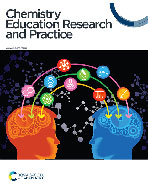Linking the submicroscopic and symbolic level in physical chemistry: how voluntary simulation-based learning activities foster first-year university students’ conceptual understanding
Abstract
Research in the past decades repeatedly revealed university students’ struggles to properly understand physical chemistry concepts. In contrast to school, tertiary teaching relies heavily on the symbolic level, mainly applying abstract representations such as equations and diagrams. To follow the lessons and generate conceptual understanding, students need to connect those representations with macroscopic and submicroscopic aspects of the scientific concept depicted. For German first-year chemistry students, this increase in abstraction in a major subject of study contributes to excessive demand and demotivation (especially during out-of-class learning) and increases the risk of early dropouts. We designed a simulation-based learning environment (BIRC: Bridging Imagination and Representation in Chemistry) to suit the needs of first-year students and support them when learning physical chemistry at home. Our approach, featuring molecular dynamics simulations, requires students to assess their own mental models on the submicroscopic level and connect them to equations and diagrams on the symbolic level. Prior studies did already highlight the potential of individual BIRC learning units to foster conceptual understanding on specific topics. In this paper, we investigate if and how students of a broader sample use these learning activities as voluntary supplement beside regular coursework. During the term, we used think-aloud protocols, interviews and eight online questionnaires to analyse students’ mental and emotional interaction while working on BIRC, assessing whether students perceived BIRC as a suitable, enjoyable and supportive resource to enhance learning. Via two paper & pencil achievement tests we examined students’ retention concerning submicroscopic mental models and their ability to connect these mental models with symbolic representations 5–10 weeks later. Our findings indicate a cognitively engaging, comparably enjoyable learning process, which strengthens conceptual understanding and – despite the necessary time and effort – induces a broad number of students to voluntarily work on several units at home.


 Please wait while we load your content...
Please wait while we load your content...